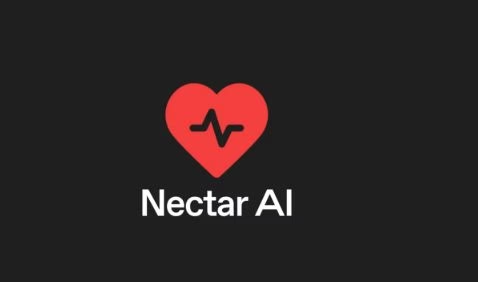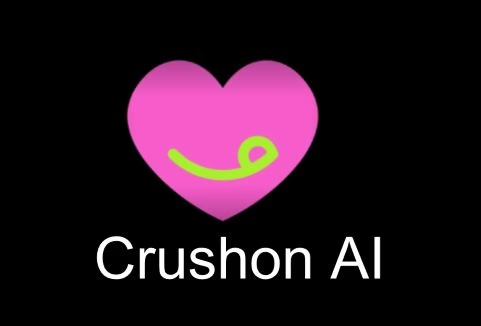14 Best Character AI Alternatives with Personas
You want Character AI alternatives with stronger personas. This guide focuses on persona depth, memory, imports, voice, and limits.
I cut the noise and explain what matters so you can switch fast.
Personas sit at the core of a good chat experience. A solid system lets you define traits, goals, tone, and example chats. It remembers key facts across sessions.
It also lets you import or export persona cards so you can move easily between apps. That is how you avoid starting from scratch every time.
We will cover tools that handle personas well, plus how to build once and reuse everywhere. I will show where each app stands on memory, card formats, voice, NSFW policy, group chat, and mobile.
I will also flag message caps and paid tiers without guessing numbers.
Why users want C.AI alternatives with personas
People want more control. They want characters that stay in role, remember facts, and speak in a consistent style. When the persona wobbles, chats feel random.
A tighter persona system fixes that. It lets you set traits, goals, and example lines that anchor behavior.
People also want portable work. Building a great persona takes time. Starting over in every app is painful. Tools that accept JSON or PNG character cards solve this. You keep one source of truth and move fast across platforms.
Limits push many to switch. Hard caps on messages or strict filters can break a long scene. Users look for apps with steadier memory, clearer rules, and flexible content settings.
Voice and image support also matter, since many roleplay flows depend on them.
Privacy and ownership are growing concerns. Some users prefer local control or clear data policies for imported personas.
They want to know what is stored, where, and for how long. Alternatives that explain this plainly earn trust and keep people around.
How we selected the best alternatives with personas
We focused on persona depth first. A good tool lets you define traits, backstory, speaking style, and example conversations.
It also lets you pin key facts that persist across sessions. This is what keeps the character steady during long chats.
Next, we looked at portability. Import and export support is vital. If a platform reads common character cards, you can build once and reuse.
We also checked whether the app supports groups, user personas, and quick switching. These features matter for complex scenes and creator workflows.
We then weighed message limits, pricing clarity, and NSFW policy. The goal is to avoid surprises. Clear caps, fair tiers, and transparent rules make planning easier.
Voice, images, and mobile apps earned extra points. These options unlock more realistic experiences and keep you engaged.
-
Persona control depth and memory quality
-
Import and export of JSON or PNG character cards
-
User personas and quick switch profiles
-
Group chat and multi-persona scenes
-
Voice and image features
-
NSFW policy transparency
-
Message caps and price clarity
-
Mobile app support and stability
A Quick Comparison of the Alternatives with Personas
| Tool | Persona strength | Memory approach | Import or portability | Best first test |
|---|---|---|---|---|
| Candy AI | Tight editor and steady voice favorite | Pinned facts for drift control | Build once then clone variants | Run a 10-minute scene and tweak only examples |
| Nectar AI | Precise tone plus visual polish | Stable recall in longer arcs | Keep a small roster of persona slots | Test two-tone variants of the same character |
| Couple.me | Relationship-centric with steady daily voice | Pinned preferences and boundaries | Reuse one profile for evolving arcs | Check last week recall without extra prompts |
| CrushOn AI | Roleplay forward and consistent | Lore and plot anchors | Duplicate personas for scene variants | Stress test with a multi-scene storyline |
| GPTgf | Fast setup and easy cloning | Anchor facts for continuity | Reuse prompts across scenes | Clone one persona into three tones |
| Janitor AI | Persona stability with clear controls | Pinned memory for reliable recall | Bring a standard card structure | Track which pinned facts resurface |
| Replika | Calm relationship voice | Light continuity for routines | Keep prompts compact | Test daily check-ins for tone steadiness |
| Kajiwoto | Data-driven persona shaping | Evolving anchors from examples | Standardize on a master dataset | Iterate on five example pairs |
| Poe | Prompt-based personas | Per chat highlights | Share links and fork versions | Compare two models with one prompt |
| Joyland | Creator-friendly editor | Practical recall for roleplay | Imports from common card types | Import a card and refine tone |
| SpicyChat | Solid card workflow | Anchors for voice and rules | Direct JSON or PNG imports | Speed test a rebuild-free setup |
| Chub.ai | Open library of strong cards | Continuity from shared patterns | Export and reuse everywhere | Model your card on a top template |
| SillyTavern | Full control with local or API models | Pin notes and trim context | Import and export cleanly | Tune context size then retest |
| TavernAI | Lean front end for quick edits | Light memory that avoids bloat | Card-friendly portability | Run a three-scene continuity check |
1. Candy AI (favorite for deep personas)
Candy AI makes persona work feel simple without dumbing it down. I can define traits, tone, and backstory in minutes, then refine with example messages until the voice sticks.
Sessions feel consistent because the persona anchors the flow. That steadiness is why I keep it near the top.
Creation never feels like a maze. I can shape personality, looks, and voice, then test in quick chats before a longer scene.
When a detail drifts, I tweak a line or pin a fact, and the character snaps back into role. It saves time and reduces restart fatigue.
I also like how fast it is to set up multiple moods for the same character. One persona can have a warmer style for daily chats and a sharper style for tough prompts.
Switching between them keeps the vibe fresh while preserving core identity.
-
Strong persona editor with traits, tone, and example chats
-
Reliable staying in character over longer sessions
-
Quick adjustments without rebuilding from scratch
-
Voice and image options that add presence
-
Clear structure for pinned facts to reduce drift
2. Nectar AI
Nectar AI gives me tight control and a clean interface. I can define a clear voice, set goals, and add sample replies that guide behavior.
The model respects those signals, so the persona feels stable across scenes. That stability makes longer arcs easier to manage.
Visual polish helps here. When I’m shaping a character, I can align appearance and tone so the vibe matches the script.
It might sound minor, but the right look plus a well-written backstory reduces friction and boosts immersion.
I also like how Nectar AI handles multiple personas. I can keep a small roster for different roles and switch fast when a scene needs new energy.
It keeps the workflow tidy and helps me iterate without losing the thread.
-
Precise persona settings with strong tone control
-
Stable behavior supported by example messages
-
Smooth multi-persona management for quick swaps
-
Visual setup that matches style to story
-
Helpful for longer roleplay arcs without constant resets
3. Couple.me
Couple.me focuses on relationship-style chats with stable character voices. I can write a compact backstory, define tone, and seed a few sample exchanges.
The persona keeps that center line across daily chats, which helps the flow feel natural. Scenes build over time instead of resetting.
Memory feels practical. I can pin facts about preferences, boundaries, and shared events so they show up later. That lets the character recall last week’s moment without prompting.
It reduces friction and makes long-running arcs easier to manage.
Creation stays simple. I set traits and adjust voice until the replies match the mood. When the tone drifts, small edits bring it back.
The tool rewards a tight setup and consistent examples.
-
Clear persona editor for tone, traits, and backstory
-
Pinned facts for steadier long-term memory
-
Relationship-centric prompts that reduce micro-management
-
Good for daily chats that grow into longer arcs
-
Quick corrections without rebuilding the persona
4. CrushOn AI
CrushOn AI is built for roleplay, so persona strength shows from the start. I define goals, style, and boundaries, then add example lines to lock the voice.
The character stays in role through long scenes, which makes it easier to write without constant guardrails.
The platform supports bolder storytelling. If the scene needs a sharper tone or richer detail, the persona holds the line. I can also pin facts about lore, relationships, and plot hooks.
Those anchors surface in later chats and keep continuity tight.
Workflow feels fast. I iterate on short tests, tune the voice, and jump into a longer session. When the vibe shifts, a small trait update or example reply gets the character back on track.
It saves time and reduces drift.
-
Roleplay-friendly design with steady in-character replies
-
Pinned memory for lore, relationships, and plot continuity
-
Quick iteration loop for testing and refining tone
-
Flexible enough for solo scenes or group dynamics
-
Strong fit for creators who need consistent, long-form arcs
5. GPTgf
GPTgf works well when the goal is fast persona setup that stays consistent. I can sketch traits, write a short backstory, and add example replies.
The character locks into a stable voice that carries across scenes. It keeps momentum high and reduces constant nudging.
Portability is a strength. I can reuse prompts and profiles to spin up related personas with small variations. That lets me experiment without losing the core identity.
When a scene needs a fresh angle, I duplicate the setup and adjust tone or goals.
Memory handling is practical. Pinning a few anchor facts helps the character recall past events and preferences. It is not about hoarding every detail.
It is about surfacing what matters, so long chats feel connected rather than piecemeal.
-
Quick persona setup with traits, backstory, and example lines
-
Easy to clone and adapt for variant voices
-
Anchor facts for steady recall in longer arcs
-
Good fit for creators who iterate often
-
Reduces rebuild fatigue across related scenes
6. Janitor AI
Janitor AI stands out for pinned memory. I can mark key facts that the character should not forget. Those facts show up later without extra prompts.
It helps maintain continuity in complex plots and relationship threads.
Persona work feels grounded. I define tone and boundaries, then reinforce with a few sample exchanges. The replies stick to the plan across long sessions.
When drift happens, a small trait tweak or a new example reply gets things back on track.
The workflow favors focus. I set the persona once, pin what matters, and spend more time writing scenes. Group conversations hold up better because everyone remembers the same core facts.
It cuts down on repeat explanations.
-
Pinned memory that reliably resurfaces key details
-
Strong persona stability over longer sessions
-
Small edits correct drift without full rebuilds
-
Solid choice for multi-character or group scenes
-
Saves time on continuity and recap prompts
7. Replika
Replika works when I want relationship-style chats with a steady voice. I set the mood, boundaries, and a short backstory.
The replies usually track with that tone across daily conversations. It helps when I want a calmer, routine flow that still feels personal.
Persona tweaks happen through guided settings and small prompt nudges. I add example lines to steer style, then test short exchanges to see if the voice holds.
If it drifts, I update phrasing or reinforce a boundary. The adjustments are quick, so I can get back to the chat.
Memory plays a supporting role. I pin a few key details and let the model surface them over time. It is not about storing everything.
It is about keeping the parts that make a relationship feel consistent from one session to the next.
-
Simple setup for tone, boundaries, and mood
-
Example lines to stabilize voice over time
-
Light memory that supports daily continuity
-
Good fit for steady, relationship-centric chats
-
Easy to correct drift with small edits
8. Kajiwoto
Kajiwoto stands out when I want a persona to learn from data I control. I can feed traits, sample conversations, and small datasets.
The character begins to mirror those inputs in a consistent way. It rewards careful curation and clear examples.
Creation feels like building a profile and a small library. I write a backstory, specify goals, and add conversation pairs that model the voice. Each round of testing shows me where to add or trim examples.
The persona tightens with every pass.
Memory supports growth. I keep a shortlist of pinned facts and rotate new anchors as the story moves. That balance keeps the character grounded while leaving room for new habits to form.
Scenes feel connected without getting rigid.
-
Data-driven setup using traits and example pairs
-
Iterative testing that tightens voice with each pass
-
Pinned facts that evolve as the story grows
-
Strong option for creators who like training flows
-
Suits longer arcs where habits matter
9. Poe
Poe makes it easy to spin up persona bots that run on different models. I write a tight system prompt with traits, tone, and example replies.
The bot keeps that voice across chats, which is great for quick testing and publishing.
Sharing is simple. I can hand someone a link, and they are chatting with the persona in seconds. That speed helps when I want feedback or when I am running small experiments.
I keep a few variants for different tones and swap as needed.
Memory works per chat, so I anchor key facts in the prompt and a short starter message. For longer arcs, I save highlights and paste them back in when I resume.
It is a light process that favors fast iteration over heavy setup.
-
Build once with a clear system prompt and examples
-
Shareable bots that others can use instantly
-
Quick variants for tone or rules without rebuilding
-
Works across multiple models for flexibility
-
Best for creators who iterate and test often
10. Joyland
Joyland suits users who want a gentle on-ramp with real persona control. I define backstory, traits, and tone, then test short chats to confirm the voice.
The interface keeps me focused on results instead of menus, which speeds up early drafts.
Imports help a lot. If I already have character cards, I can bring them in and refine. That means I keep my prior work and avoid starting from zero.
It also makes Joyland a useful hub when I move personas between tools.
Discovery is built in. Public characters give me examples to learn from, and I can adapt ideas without copying the whole setup.
Over time, I collect a small roster and switch between them depending on the scene I am writing.
-
Straightforward persona editor for traits and tone
-
Import support to reuse existing character cards
-
Public library for learning and quick inspiration
-
Good pacing for roleplay without heavy setup
-
Handy when moving personas across platforms
11. SpicyChat
SpicyChat works well when I want to move fast with personas I already built. I can bring in JSON or PNG character cards and get chatting in minutes.
That saves the time it takes to rebuild traits, tone, and examples from scratch. It also keeps continuity tight across tools.
Persona editing feels clear. I start with a backstory and a small set of example replies. Then I pin a few facts that must surface later.
The voice holds through longer scenes because the anchors are simple and direct. I spend less time correcting drift and more time writing.
Testing loops are quick. I try a short exchange, adjust a trait or boundary, and retry. The character snaps into place after a few passes.
When I need a variant, I duplicate the persona and change tone or goals. Variants help me keep the core identity while exploring new angles.
-
Direct import of common JSON or PNG character cards
-
Simple editor for traits, tone, and example lines
-
Fast iteration loop for tuning voice and boundaries
-
Easy duplication for persona variants
-
Good fit for creators moving between platforms
12. Chub.ai
Chub.ai serves as a public hub for persona cards. I can browse characters, study how authors structure traits and examples, and adapt the good parts to my own work.
This improves my setups faster than guessing alone. I learn what keeps a voice stable and what causes drift.
Portability is the point. Cards export and import cleanly, so I keep a single source of truth for each persona. I update one card, then reuse it in tools that accept the same formats.
That reduces rebuild fatigue and lets me standardize style across apps.
Creation benefits from the library effect. I open a few strong cards, compare structures, and model my own on those patterns.
The result is a tighter persona with fewer surprises in long chats. Over time, I keep a roster of reliable characters I can trust.
-
Open library of character cards to learn from
-
Clean export and import for portable personas
-
Consistent structures that reduce drift
-
Strong starting points for new builds
-
Useful backbone for a multi-tool workflow
13. SillyTavern
SillyTavern gives me full control of personas. I write traits, tone, and examples, then choose the model I want. Local, hosted, or API keys all work.
This setup lets me tune both the character and the model until replies match the voice I want.
Card workflows feel natural. I import JSON or PNG character cards, test a scene, and refine the setup.
When I learn a better structure from another tool, I copy that pattern into my card here. The persona gets tighter with each pass and holds steady during long chats.
Memory tools help with continuity. I pin facts, keep short notes, and trim excess context so only the key anchors stay hot.
That balance keeps the character consistent without bloating the prompt. I spend more time writing and less time rescuing drift.
-
Works with local and API models
-
Imports and exports common character cards
-
Pinable facts for stable continuity
-
Fine control over context and formatting
-
Good for creators who like hands-on tuning
14. TavernAI
TavernAI keeps the workflow lean. I define a backstory, set goals, and add example lines. The interface stays out of the way, so I can iterate fast.
When the tone shifts, small edits bring replies back to the plan without a full rebuild.
Card portability is strong. I bring in cards from other tools, adjust fields, and keep the same core voice. This lets me maintain one source of truth across apps.
I can switch models or hosts without losing the persona’s identity.
Sessions stay organized. I pin a few anchors, keep a short memory list, and archive highlights I might need later. The character recalls the right details without pulling in noise.
Long chats feel connected and easier to guide.
-
Simple editor for traits, tone, and examples
-
Smooth import and export of persona cards
-
Light memory approach that avoids prompt bloat
-
Easy model swaps while keeping voice intact
-
Fast loop for testing and refinement
Quick recap before we close
You now have a clean shortlist of Character AI alternatives with real persona control. Each includes how personas are created, how memory works, and what makes the tool practical day to day.
The core theme is stability and portability. Strong traits, tone, and example messages keep characters in role. Pinned facts and light highlights maintain continuity.
JSON or PNG cards let you move work between apps without starting from zero.
If you want a fast start, set one master persona card, keep three to five example exchanges, and pin three anchor facts you want every session to remember.
Test short scenes, update the master, then reuse that card everywhere.
-
Build once and export to JSON or PNG
-
Keep small, high-impact anchors for memory
-
Test short scenes before long arcs
-
Update the master card, not copies
How to choose with confidence
You have a clear shortlist that puts personas first. We led with Candy AI as a quiet favorite, then Nectar AI, Couple.me, CrushOn AI, and GPTgf.
The rest round out the options for memory control, portability, and power user workflows. Your best choice will match how you build and reuse personas, not just how a demo feels on day one.
I keep one master card per persona, test short scenes, and pin three anchors that must always come back. If an app lets me import that work without rebuilds, it moves up the list.
Stable voice, simple edits, and clean recall beat flashy extras that fade after a week.
Use the table to shortlist two or three tools that match your workflow. Then run the same ten-minute test on each with the same master card.
Pick the one that stays in role with the least babysitting. That is the tool you will keep using.







